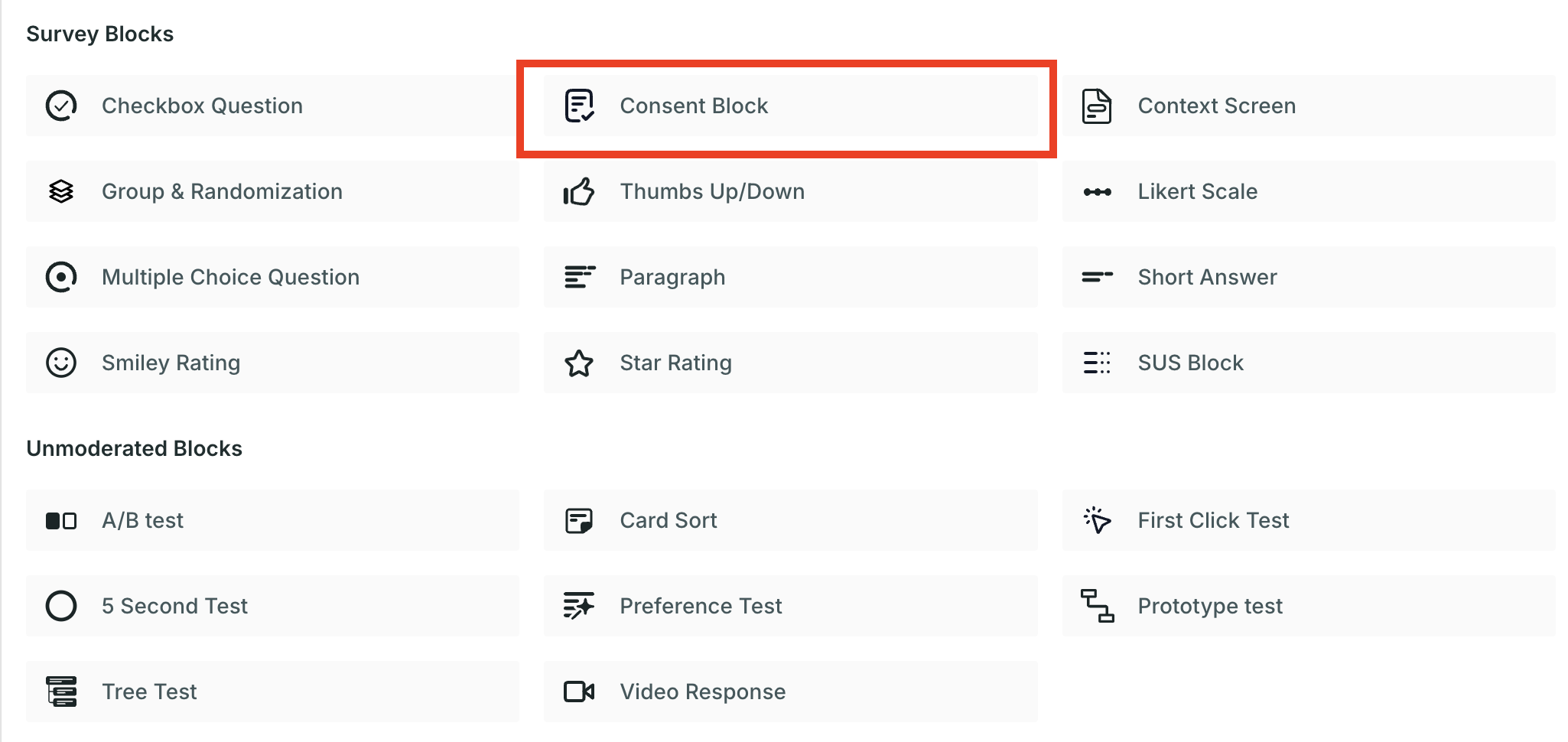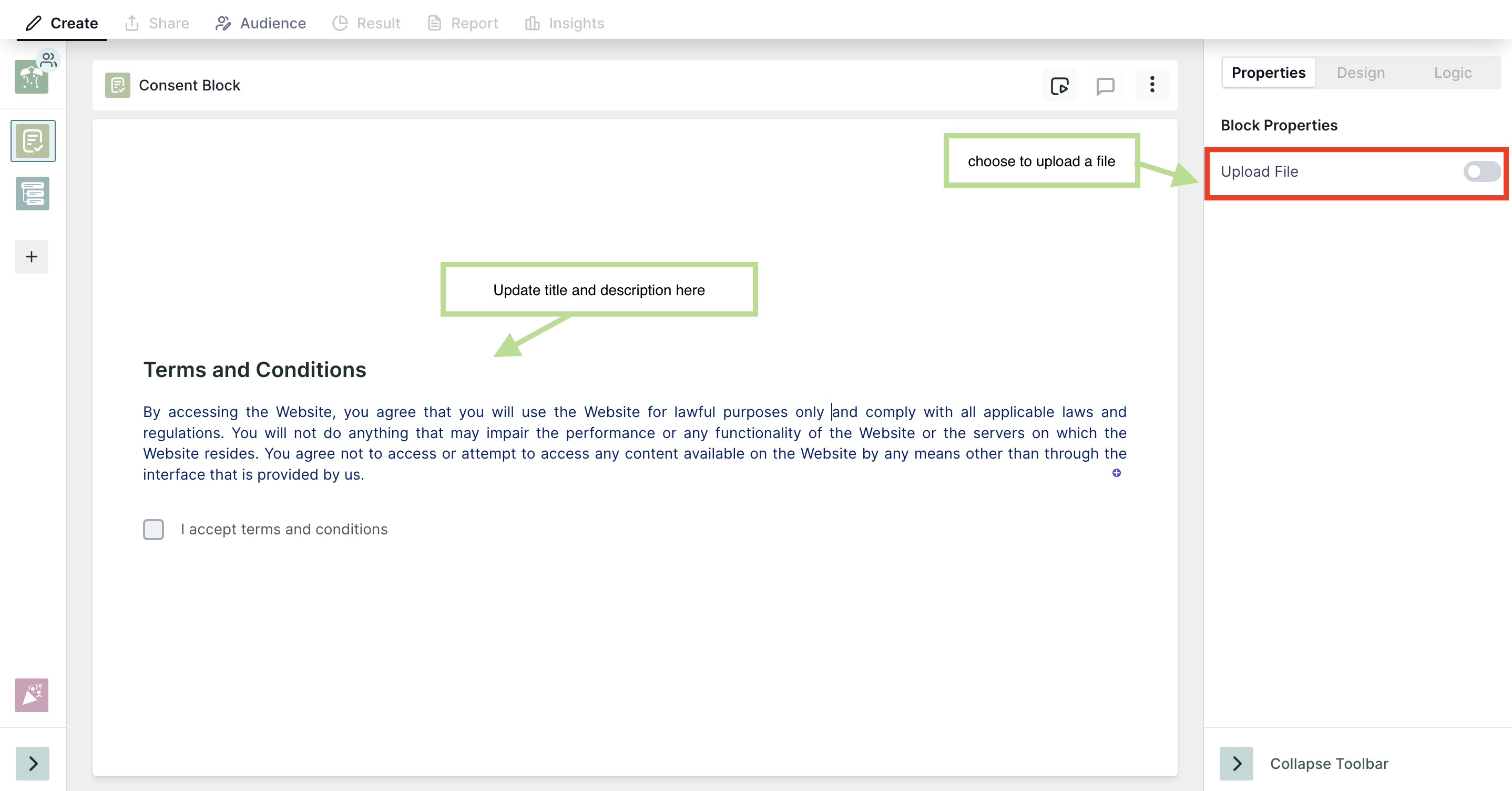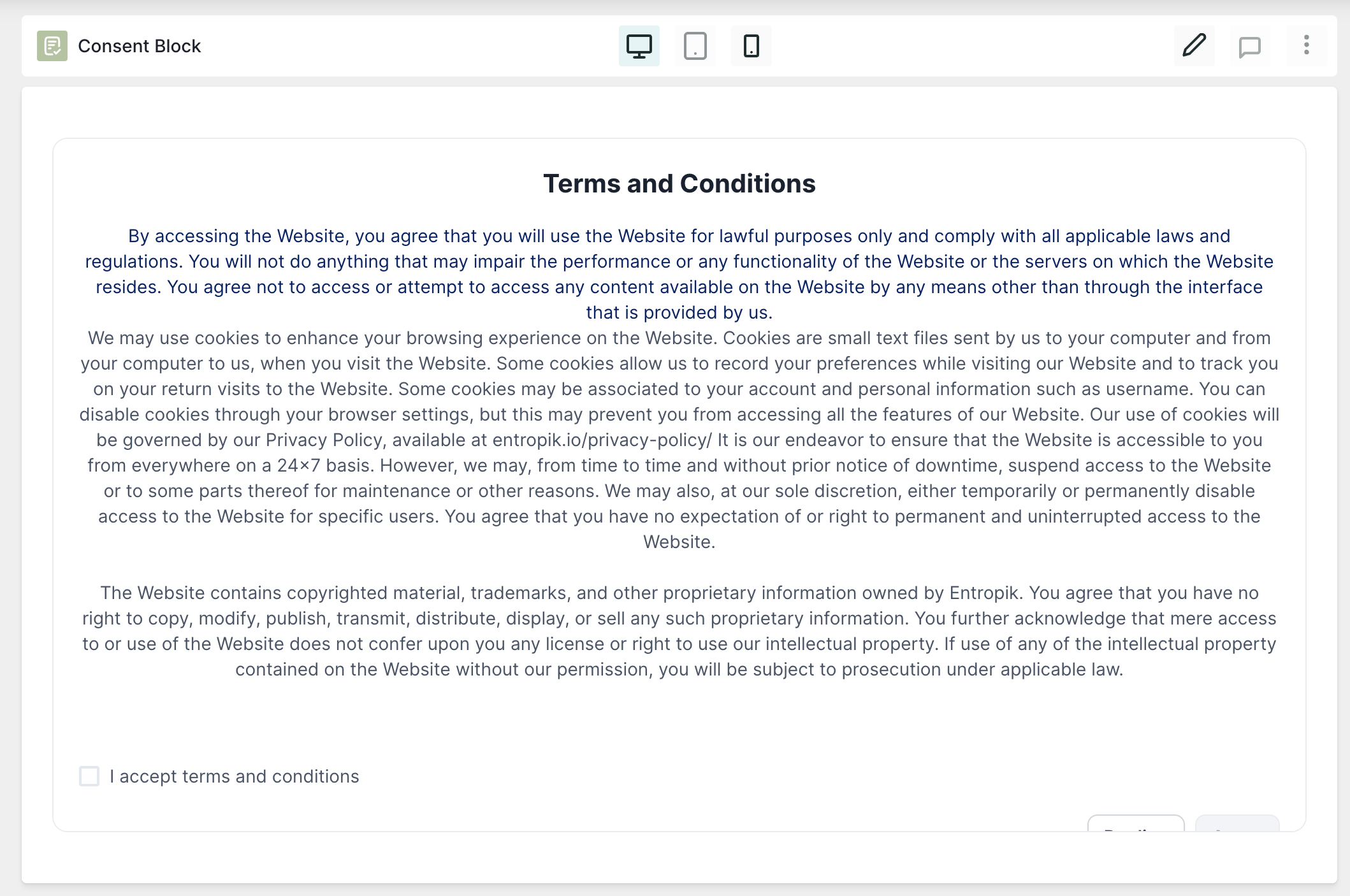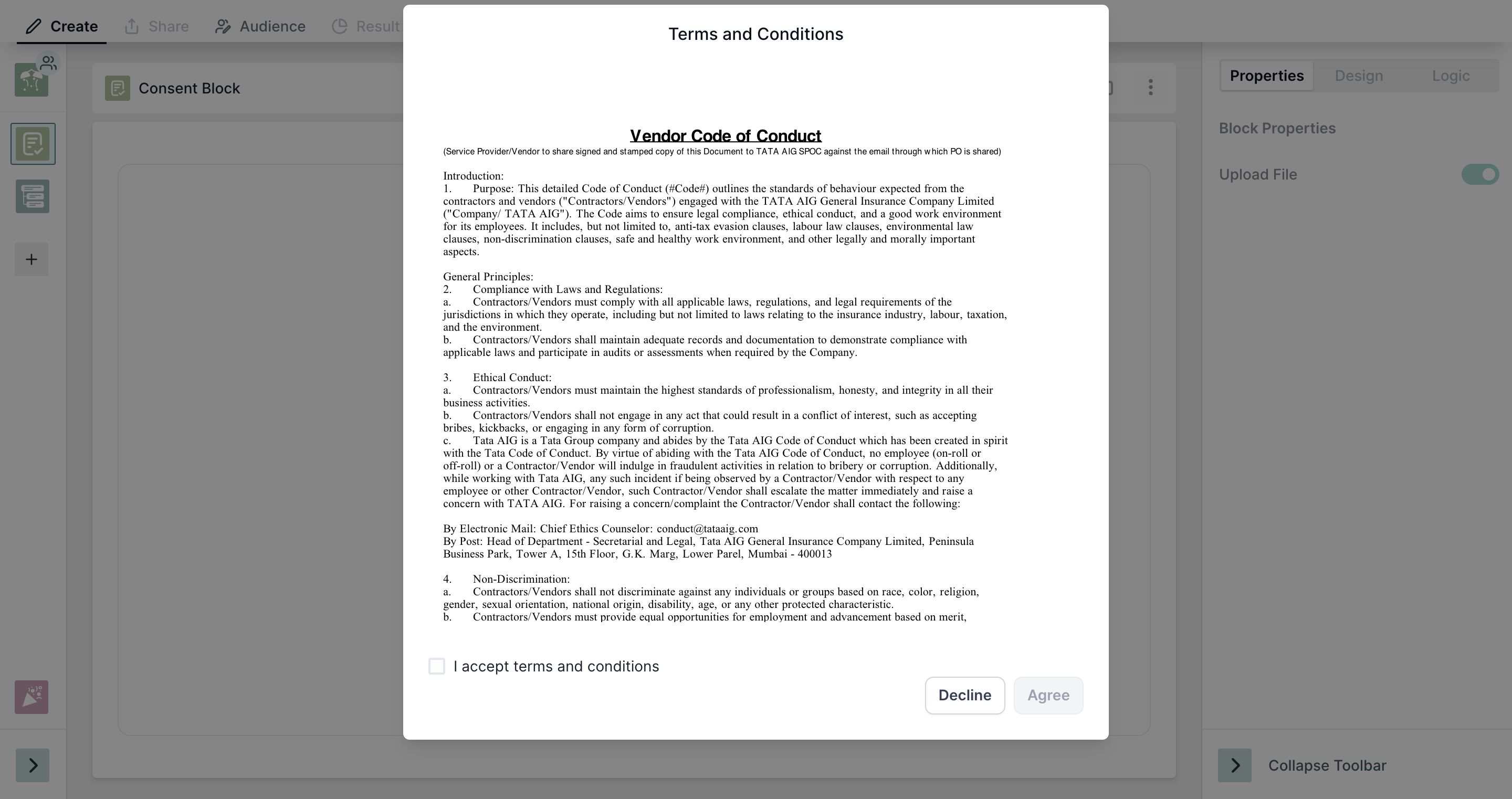Consent Block in Qatalyst
Ensuring transparency and user consent is paramount in any testing process. In Qatalyst, you have the ability to integrate a Consent Block into your studies seamlessly. This block allows you to add titles and descriptions, or upload files as consent materials. During the test, testers can conveniently access and review the contents of the Consent Block, affirming their understanding and agreement with the terms and conditions through a simple checkbox. This ensures that testers are fully informed and compliant, contributing to an ethical and transparent testing environment.
How to Add a Consent Block: Step-by-Step Guide
Step 1: Log in to your Qatalyst Account
Upon logging into your Qatalyst account, you will be directed to the dashboard, where you can manage and create studies.
Step 2: Create a New Study
Click the "Create Study" button on the dashboard to initiate a new study. Choose to start from scratch or use an existing template to streamline the process.

Step 3: Add a Consent Block
Once in the study creation interface, click on the "Add New Block" button. From the list of block options, select "Consent Block" to add this feature to your study.

Step 4: Customize the Consent Block
In the Consent Block, you have the flexibility to add a title and description. Alternatively, you can upload a PDF file containing your consent materials for thorough documentation.

Preview of text and PDF consent:


As shown above, the Consent Block provides a preview of both text and PDF-based consent materials. This ensures that your testers have a clear understanding of the terms and conditions before proceeding with the test.
Step 5: Publish your study
Once you've finished creating your study by adding other blocks you can go ahead and publish it.
Test Execution
After the welcome block consent block appears, respondents will be prompted to either accept or reject the terms and conditions. If they choose to agree, the test will proceed. In the event of a decline, the study will conclude for the respective tester, ensuring a respectful and consensual testing experience.
